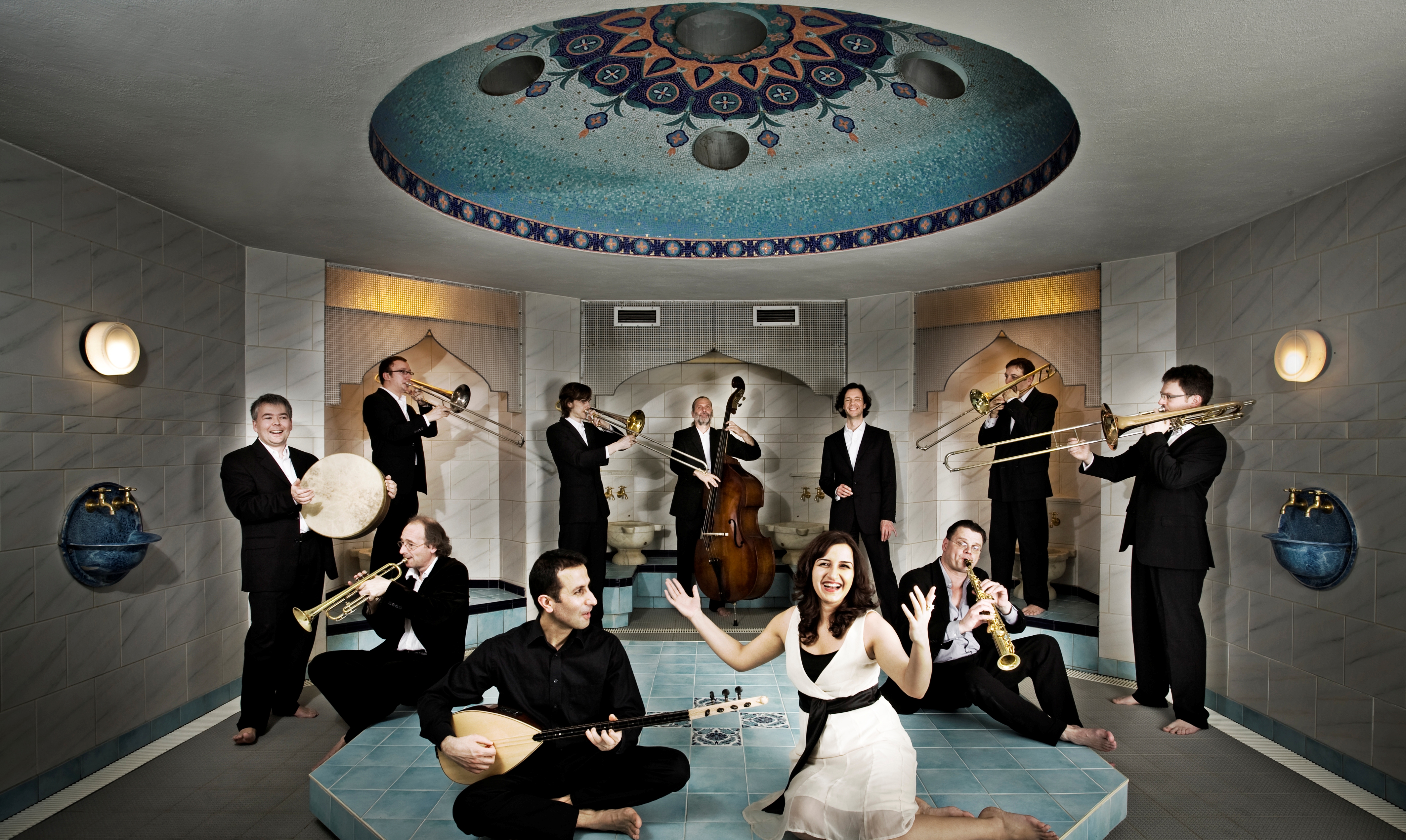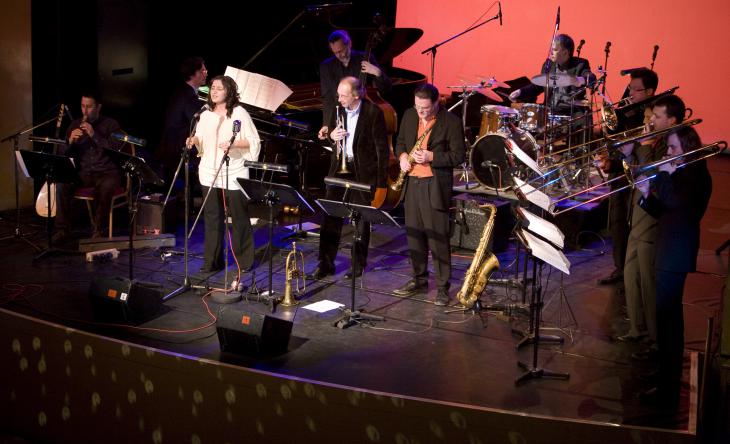"More feeling than form"

There is a palpable sense of anticipation as the musicians of the Anatolian Jazz Orchestra troop onto the stage; one doesn't know quite what to expect. First to take their places are the trumpet and saxophone, then come the trombones, one after the other, followed by a drummer, a bassist, and finally, a singer and a lute player. Eleven in all – including a six-strong wind section – and then they let loose.
From the outset, listeners are enveloped in a rich, full-bodied big band sound; during solo passages the Anatolian long-necked lute partners the saxophone playing the same melody. Rather amazingly, it works!
"It took us quite a while to get things together," explains drummer Peer Triebler. The orchestra dates back to 2005, when Turkish musician Remzi Emek assembled the initial line-up. Back then, Triebler admits, their sound was pure jazz. Even the most discerning of experts would have needed a great deal of imagination to discern any trace of the music's Anatolian roots.
A new unique sound
The wish to retain the authentic character of the music was something they all felt strongly about however. And so began an experimental phase. It was important that the two music styles should not just be juxtaposed – nor should they simply be "glued together". There was to be no question of just playing alongside one another, it had to be with one another, bringing the musical influences together, letting them flow into one another in a creative fusion, a true blending of cultures.
Not always an easy task. The challenge of integrating the softer sounds of the long-necked lute, the baglama, or the mey and duduk reed pipes into the brass arrangements, combining very different sounds, was a real challenge for the passionately dedicated musicians.
Their 2009 CD Zeytin Agaci (Olive Tree) bears ample witness to the extent to which the eleven have succeeded in mastering this challenge – the ten-track album a delightful mix of peppy jazz rhythms and lush brass arrangements. One track, based on the folk song Mor Koyun (Purple Sheep) features the long-necked lute and trumpet, the trumpet responding to the motif picked out on the long-necked lute in organic and harmonious coalescence. Something else that works particularly well is the accompaniment on trombone and trumpet provided for the rousing strains of singer Sibel Egilmez's song Merak (Curiosity) about the arrival of spring.
When it comes to accommodating the plaintive melancholy of the Anatolian folk songs in different harmonies, jazz music seems to work particularly well. It also effectively accentuates the strikingly infectious dance rhythms.
Jazz has always been receptive to innovation and diversity. Here, its encounter with the typical rhythmical structures of Anatolian music, "long air" (uzun hava) and "broken air" (kirik hava), has given birth to yet another variant. Nevertheless, certain aspects of the Anatolian music proved problematic for the musicians.
"We′re perhaps a little too Prussian in our precision"
The 5/8 and 7/8 beats it uses, for example, are not common in Western music. "We′re perhaps a little too Prussian in our precision," laughs Triebler, who studied music in Dresden. Anatolian songs are more about melody, rhythm is less important; it sort of arises automatically from the dance music. "The nice thing about it," says Peer Triebler, is that "if you immerse yourself in the music, you reach a point where you realise the importance of responding emotionally – it becomes more about feeling than form."
Another difference is that Anatolian music is monophonic. It is limited to rhythm around a single scale. Jazz, on the other hand, depends on chords and harmonies and conventionally incorporates three elements, Treiber explains. "The melody, the chords, that is, the accompaniment to the melody – and the rhythm." The second level is missing in Anatolian music. When the jazz chords are played along with the Anatolian quarter tones, which sometimes can't be played on the piano or guitar, the resulting sound is unique to say the least.

The only similarity between the two styles is improvisation, which is common to both cultures. Were one to compare Anatolian folk songs with any Western style of music, then it would be the blues, says Ozgur Ersoy. He plays the Turkish instruments in the band. "Perhaps someone like John Lee Hooker, singing about his life and his suffering, accompanying himself on guitar, is comparable to the so-called bozlak, the epic singer with his song stories. He improvises without rhythm and without a specific scale, a teller of funny and sad tales. Performers such as Neset Ertas and Asık Veysel for instance.
Turning up musical rarities
Ozgur Ersoy likes the songs he chooses to be well-known. He likes dance music most of all, things the audience will want to hear. But through his work he is continually turning up musical rarities from his homeland. "Anatolia possesses an incredibly rich musical heritage," he says. "One is always coming across new songs and the diversity is incredible." Songs from villages only a few kilometres apart can use entirely different rhythms and scales.
For the time being, the Anatolian Jazz Orchestra remains one of Berlin's best kept secrets and one largely the preserve of the jazz cognoscenti. "We had expected our music to appeal to a lot more Turkish people," says Triebler, not without a touch of disappointment in his voice. "I think they have more of a problem than we central Europeans do in dealing with their music suddenly sounding so different."
Ozgur Ersoy believes the music opens doors in two directions. "Our music gives jazz lovers access to Anatolian music. And people in Anatolia, who have little experience of jazz, can get to know it through our music." Let's hope, then, that these eleven experiment-loving jazz musicians will continue to spread their infectious enthusiasm for their music to many, many more people.
Ceyda Nurtsch
© Qantara.de 2015
Translated from the German by Ron Walker
